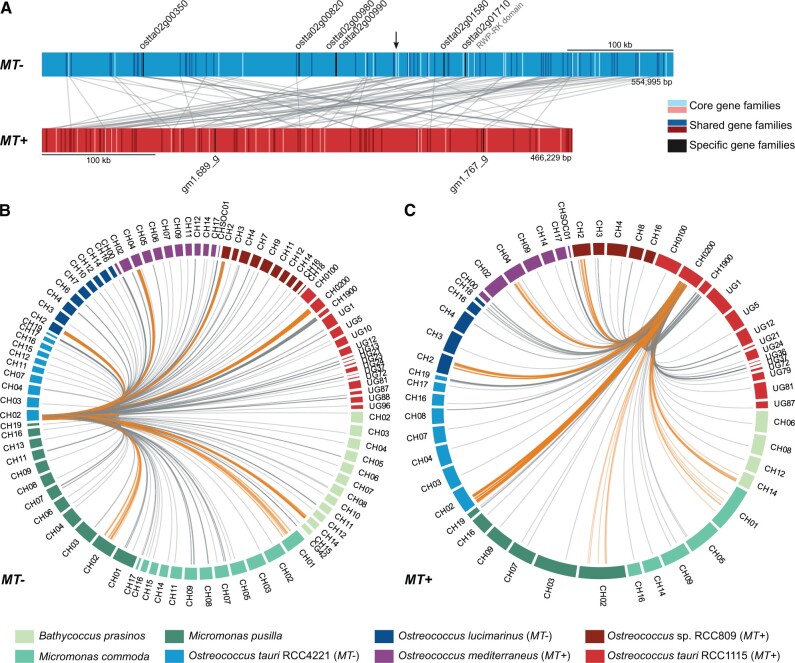Fig. 2.
Gene organization in the mating-type region of Ostreococcus tauri RCC4221 (MT−) and RCC1115 (MT+). (A) Location of gene pairs from the 23 core GFs and 57 shared GFs in the mating-type region of O. tauri RCC4221 (MT−, blue rectangle) and RCC1115 (MT+, red rectangle). Genes from core and shared GFs are represented by bright and dark ticks, respectively, and homologous gene pairs are connected by gray lines. Genes from MT+ or MT− specific GFs are also shown, represented by black ticks. Shared GFs having multiple copies in either O. tauri RCC4221 (MT−) and RCC1115 (MT+) are not depicted. (B, C) Location of homologous MT genes from GFs with copies outside of either O. tauri MT region in Mamiellales genomes, for O. tauri RCC4221 (MT−, 39 GFs, B) and RCC1115 (MT+, 16 GFs, C). Each peripheral segment represents a chromosome or scaffold of one of eight Mamiellales genomes. The MT genes from O. tauri RCC4221 (MT−, B) or RCC1115 (MT+, C) are connected to their homologs by gray lines. If a homolog is located within a MT locus, the link is colored in orange. CH, chromosome; CG, contig; UG, unitig.

